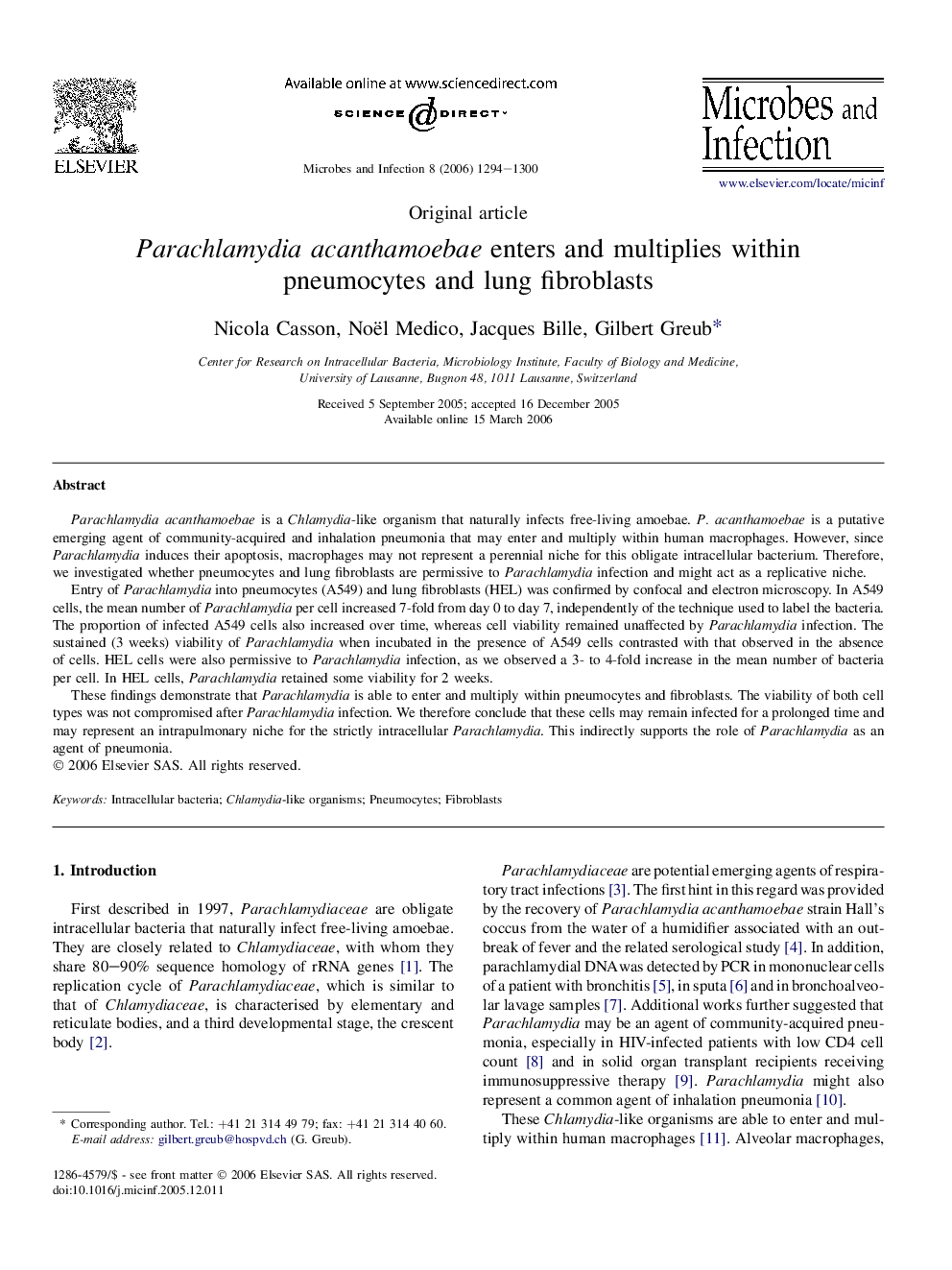| Article ID | Journal | Published Year | Pages | File Type |
|---|---|---|---|---|
| 3415610 | Microbes and Infection | 2006 | 7 Pages |
Parachlamydia acanthamoebae is a Chlamydia-like organism that naturally infects free-living amoebae. P. acanthamoebae is a putative emerging agent of community-acquired and inhalation pneumonia that may enter and multiply within human macrophages. However, since Parachlamydia induces their apoptosis, macrophages may not represent a perennial niche for this obligate intracellular bacterium. Therefore, we investigated whether pneumocytes and lung fibroblasts are permissive to Parachlamydia infection and might act as a replicative niche.Entry of Parachlamydia into pneumocytes (A549) and lung fibroblasts (HEL) was confirmed by confocal and electron microscopy. In A549 cells, the mean number of Parachlamydia per cell increased 7-fold from day 0 to day 7, independently of the technique used to label the bacteria. The proportion of infected A549 cells also increased over time, whereas cell viability remained unaffected by Parachlamydia infection. The sustained (3 weeks) viability of Parachlamydia when incubated in the presence of A549 cells contrasted with that observed in the absence of cells. HEL cells were also permissive to Parachlamydia infection, as we observed a 3- to 4-fold increase in the mean number of bacteria per cell. In HEL cells, Parachlamydia retained some viability for 2 weeks.These findings demonstrate that Parachlamydia is able to enter and multiply within pneumocytes and fibroblasts. The viability of both cell types was not compromised after Parachlamydia infection. We therefore conclude that these cells may remain infected for a prolonged time and may represent an intrapulmonary niche for the strictly intracellular Parachlamydia. This indirectly supports the role of Parachlamydia as an agent of pneumonia.
